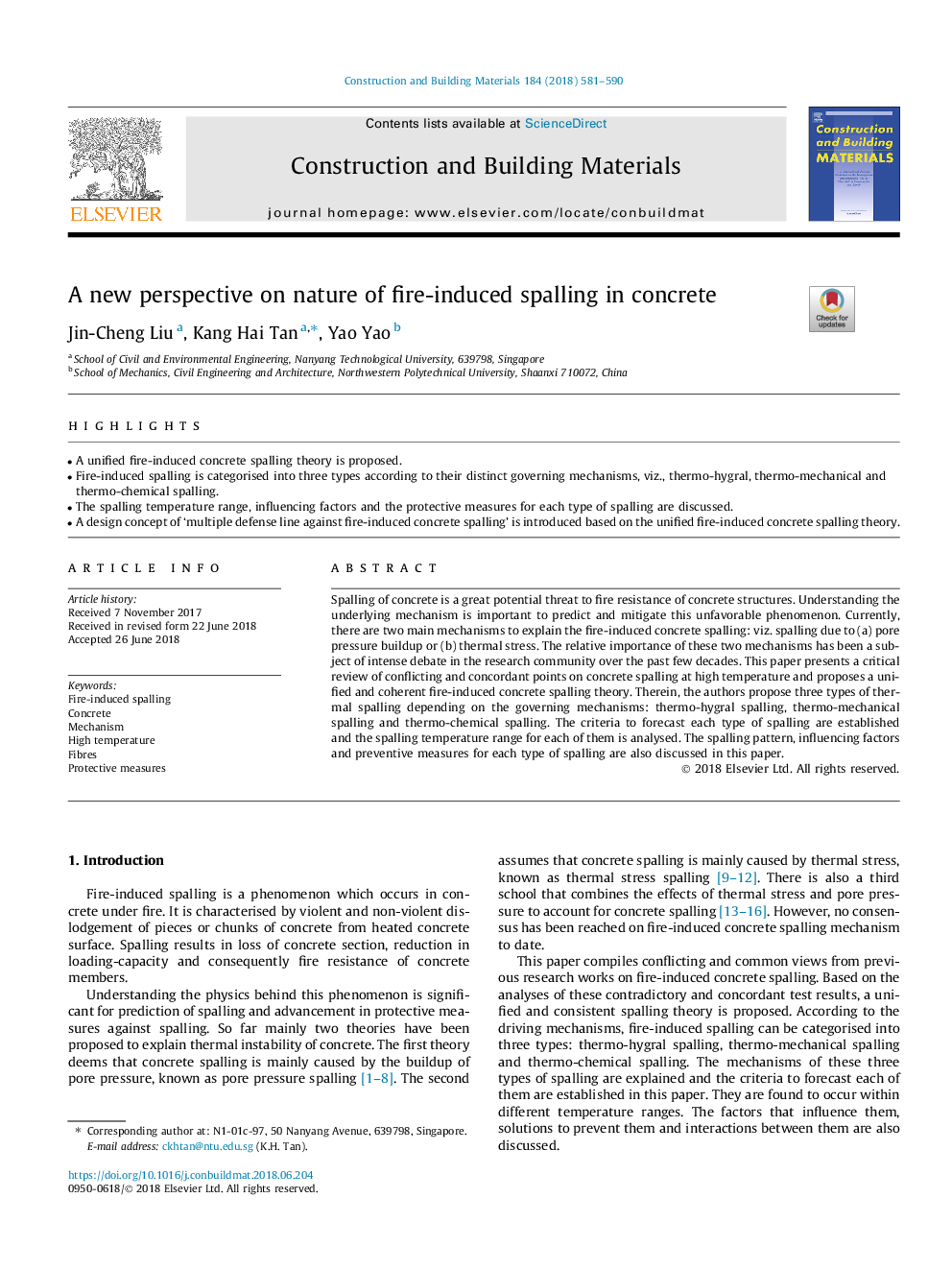| Article ID | Journal | Published Year | Pages | File Type |
|---|---|---|---|---|
| 6712190 | Construction and Building Materials | 2018 | 10 Pages |
Abstract
Spalling of concrete is a great potential threat to fire resistance of concrete structures. Understanding the underlying mechanism is important to predict and mitigate this unfavorable phenomenon. Currently, there are two main mechanisms to explain the fire-induced concrete spalling: viz. spalling due to (a) pore pressure buildup or (b) thermal stress. The relative importance of these two mechanisms has been a subject of intense debate in the research community over the past few decades. This paper presents a critical review of conflicting and concordant points on concrete spalling at high temperature and proposes a unified and coherent fire-induced concrete spalling theory. Therein, the authors propose three types of thermal spalling depending on the governing mechanisms: thermo-hygral spalling, thermo-mechanical spalling and thermo-chemical spalling. The criteria to forecast each type of spalling are established and the spalling temperature range for each of them is analysed. The spalling pattern, influencing factors and preventive measures for each type of spalling are also discussed in this paper.
Related Topics
Physical Sciences and Engineering
Engineering
Civil and Structural Engineering
Authors
Jin-Cheng Liu, Kang Hai Tan, Yao Yao,
